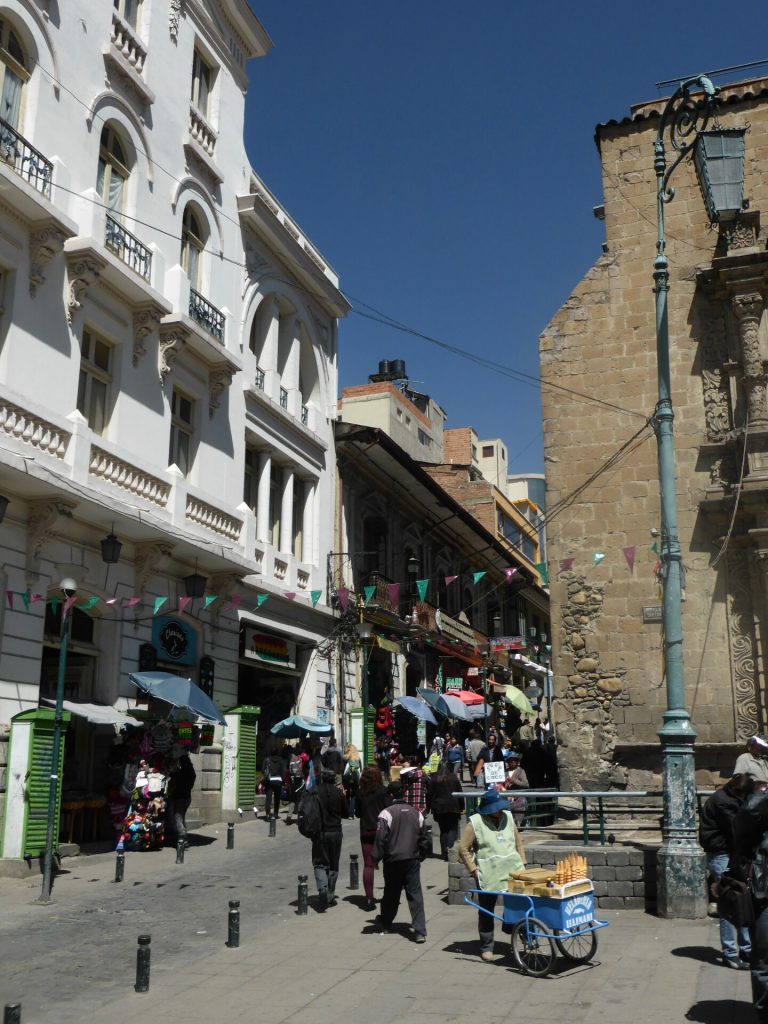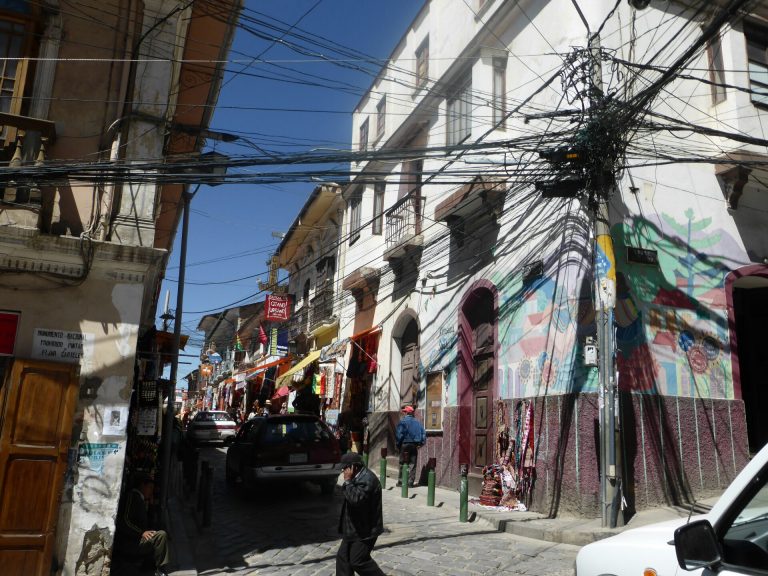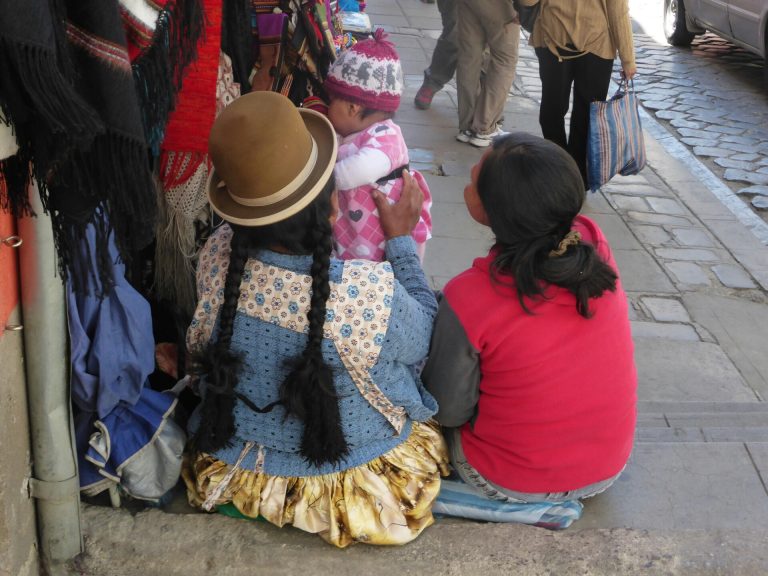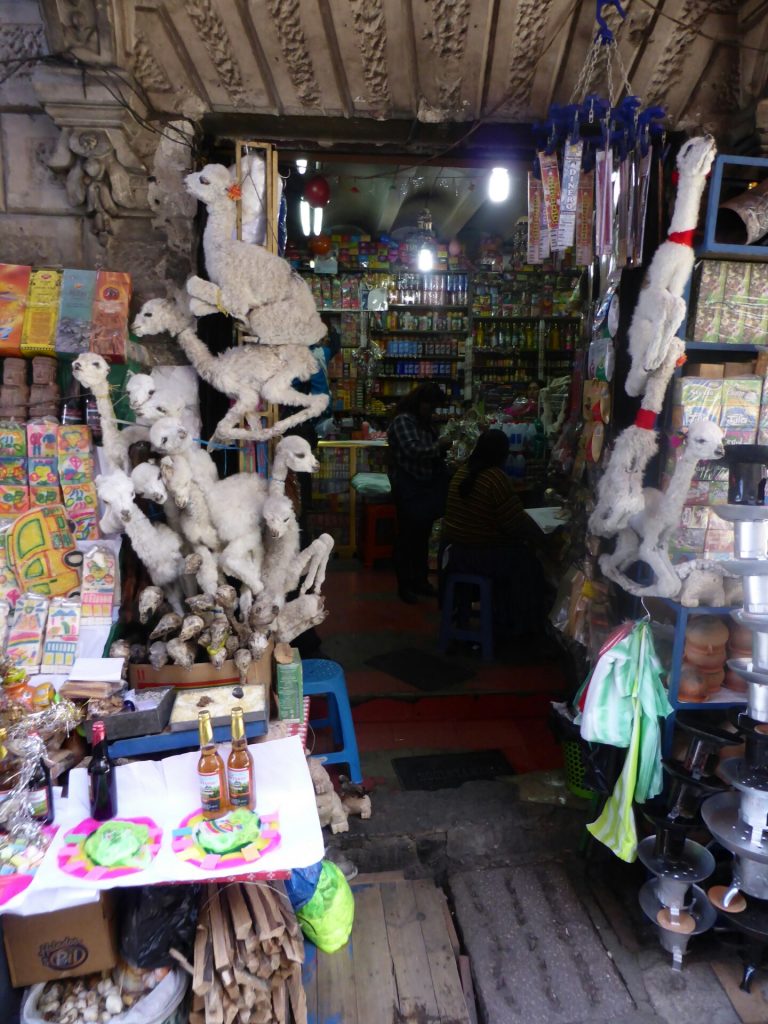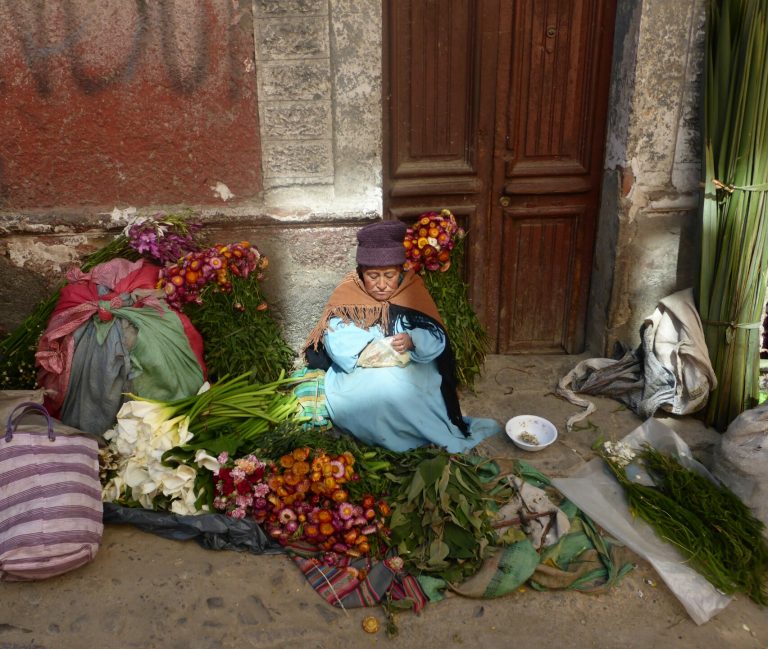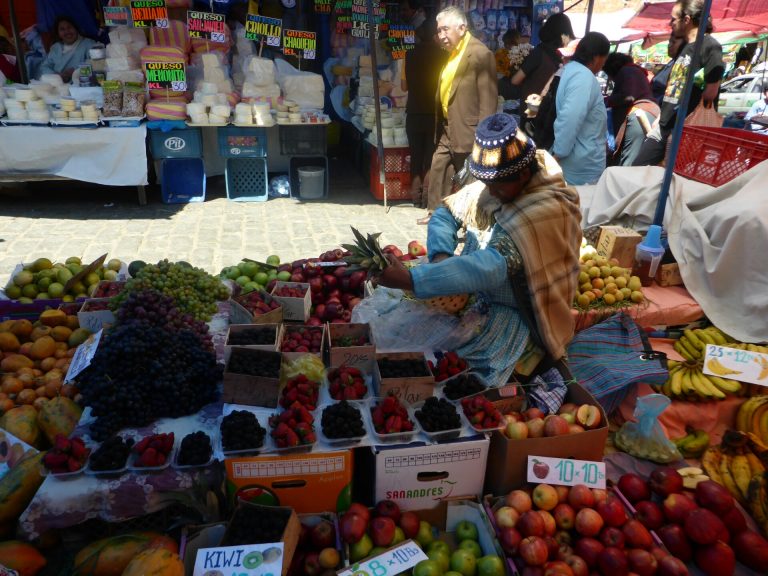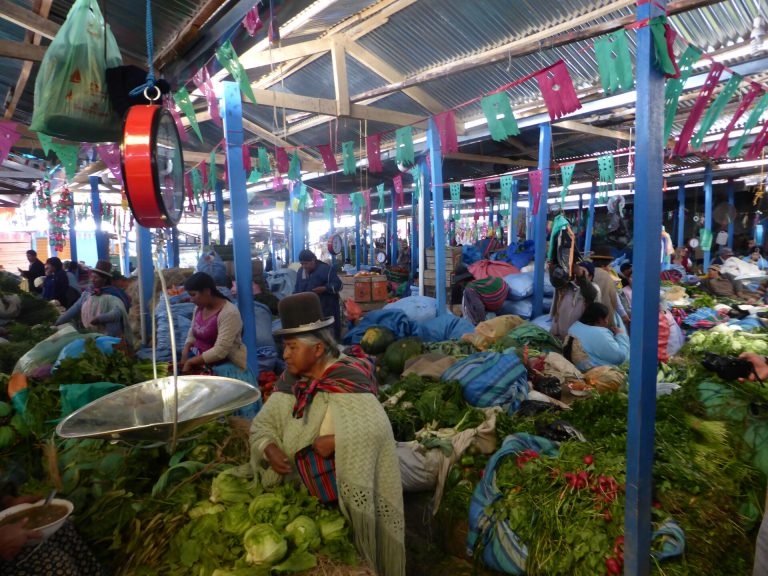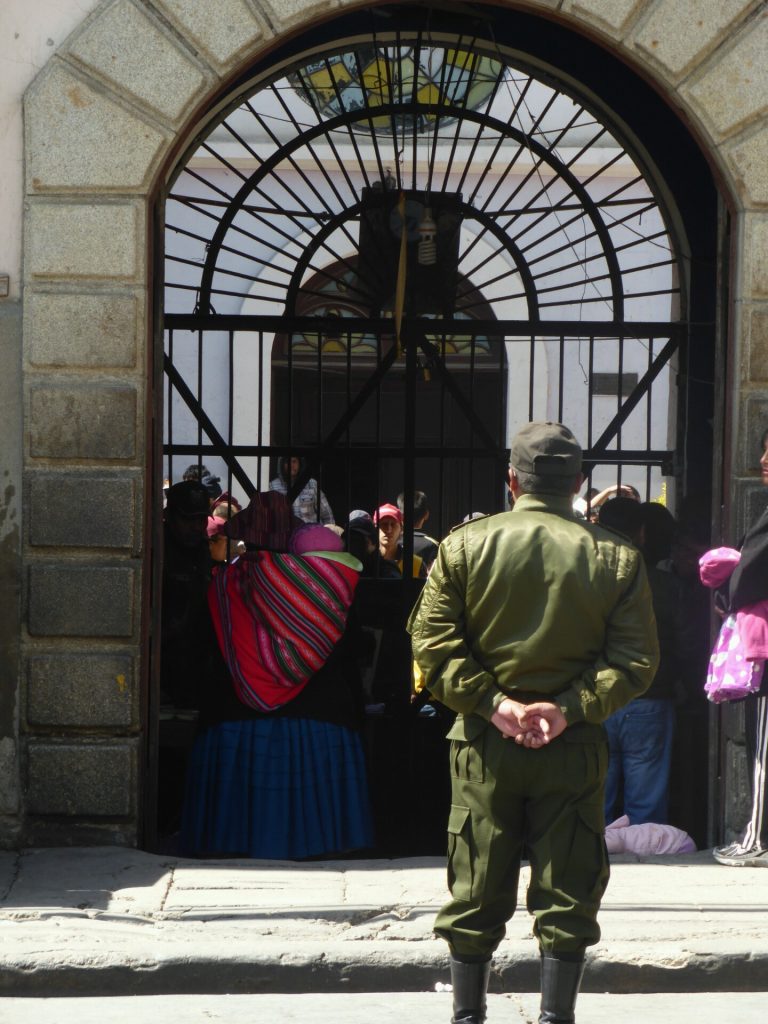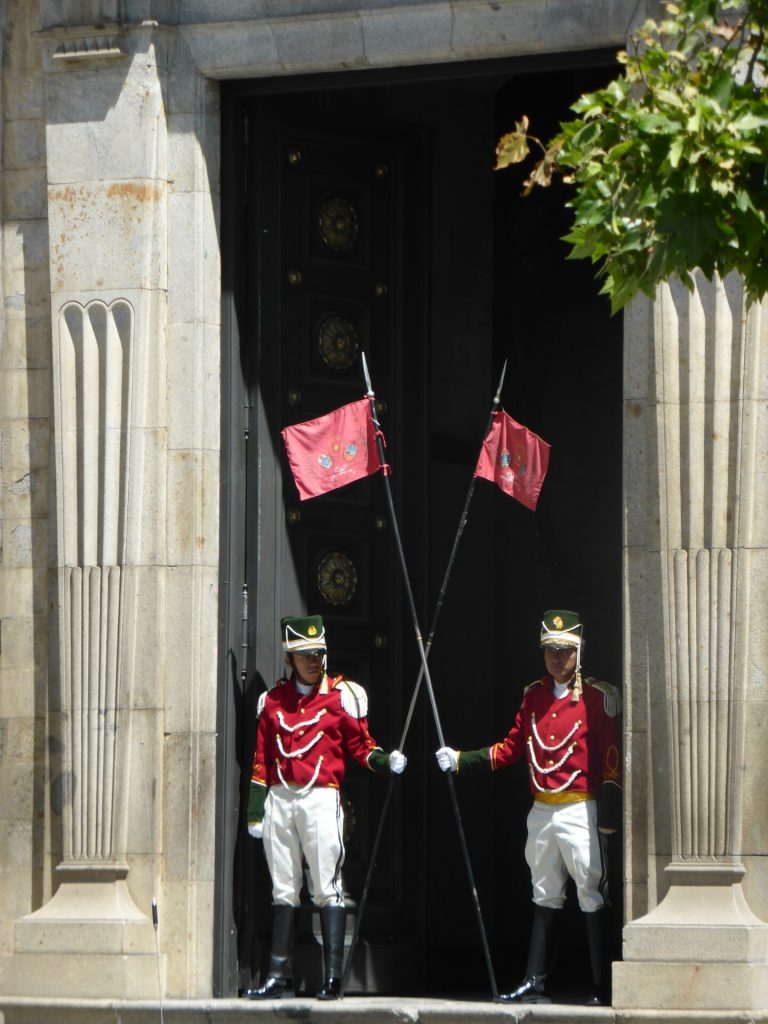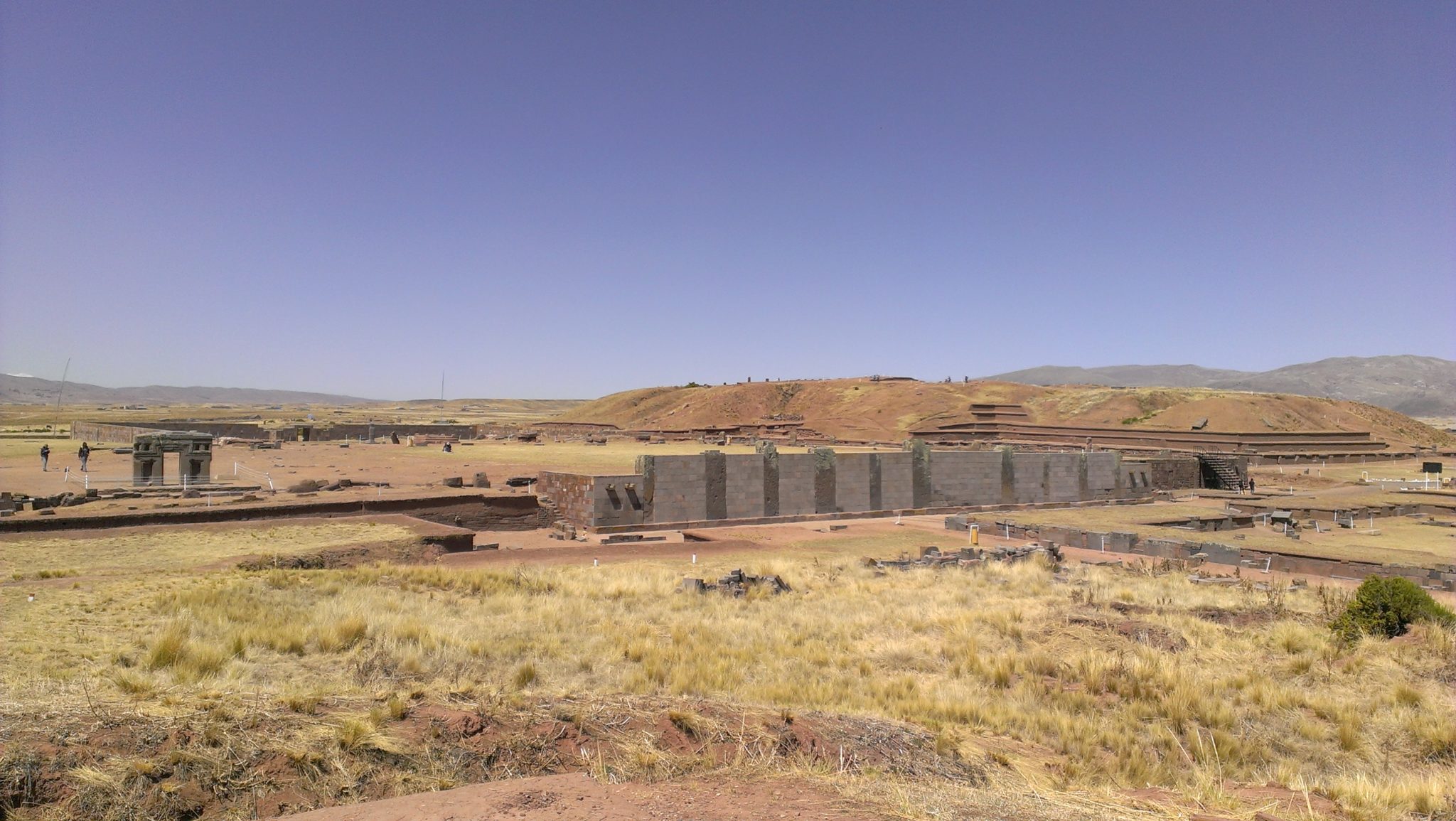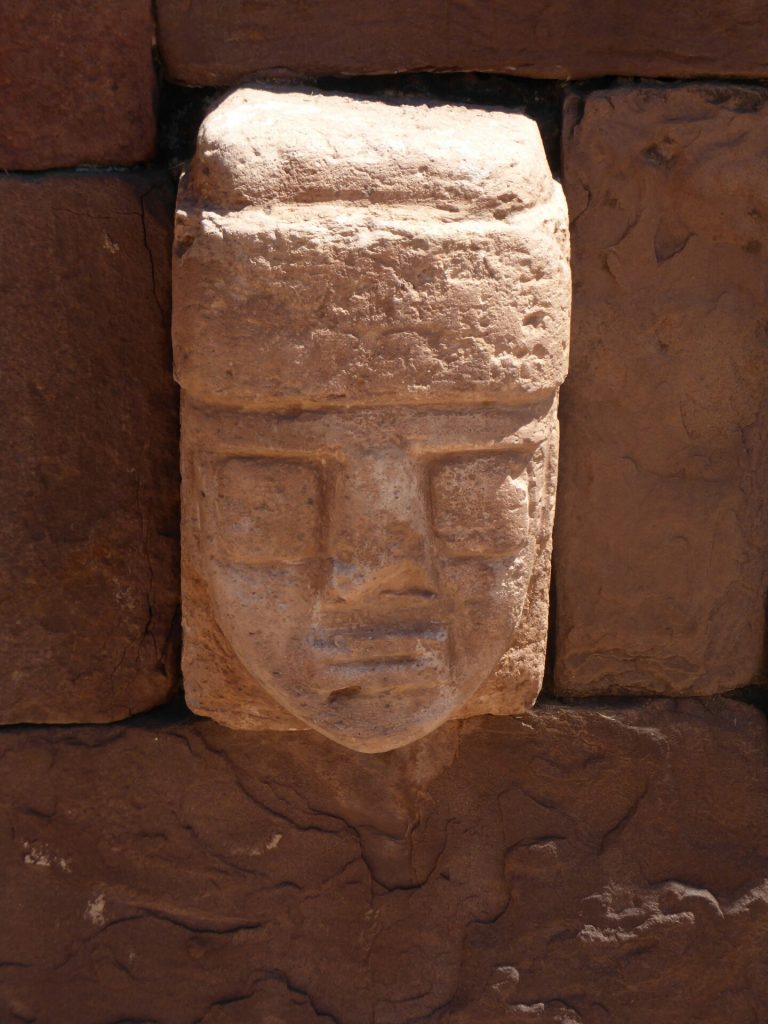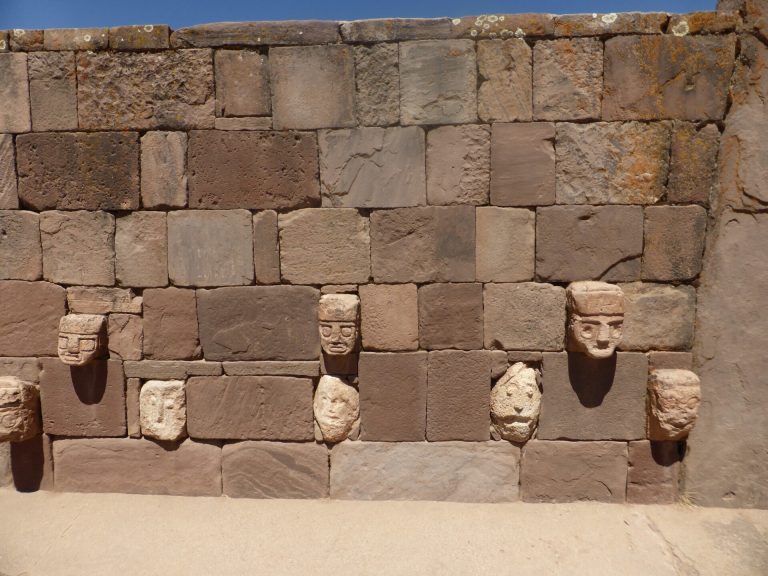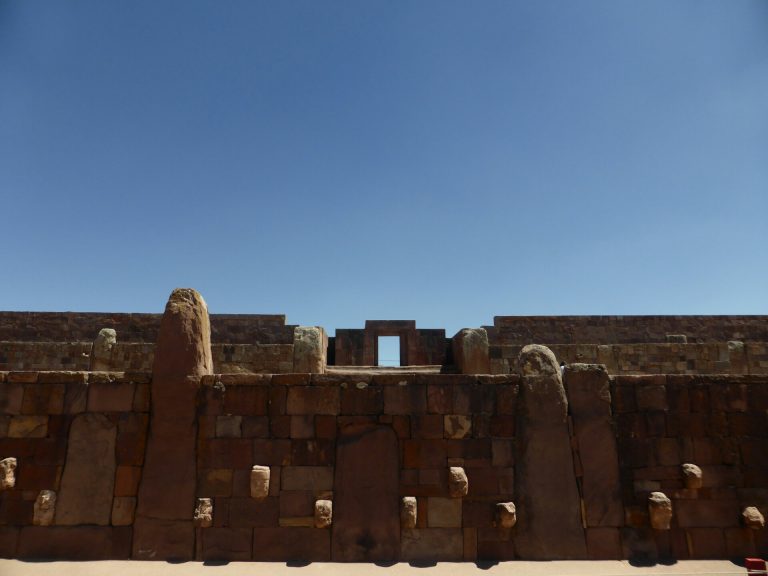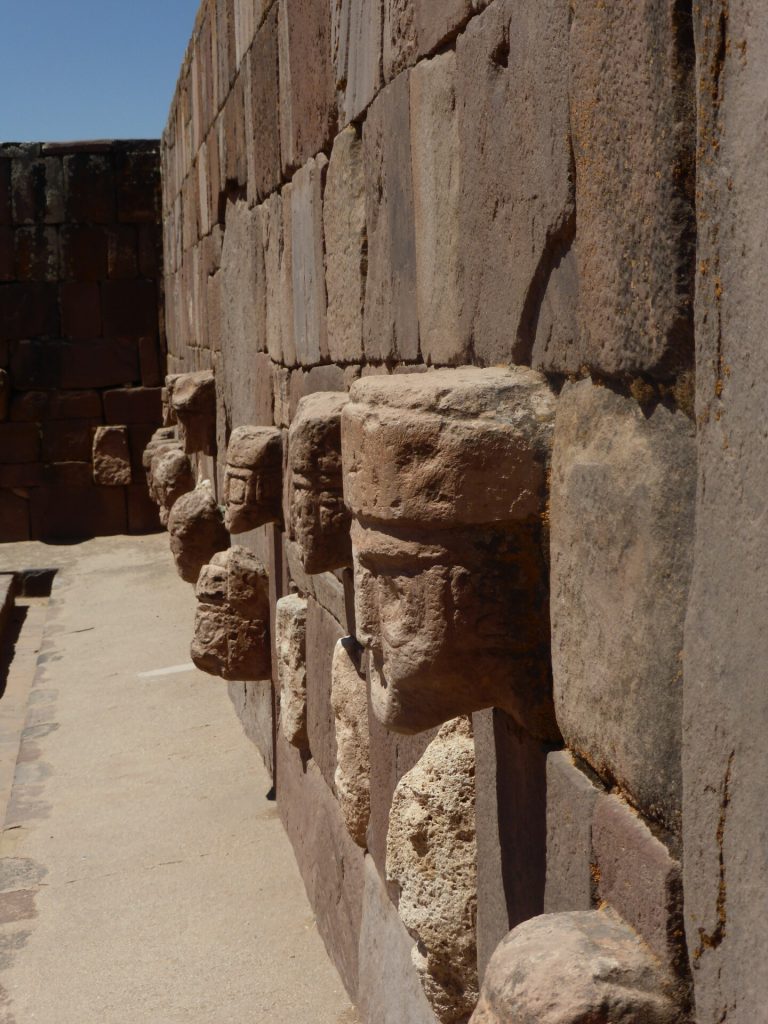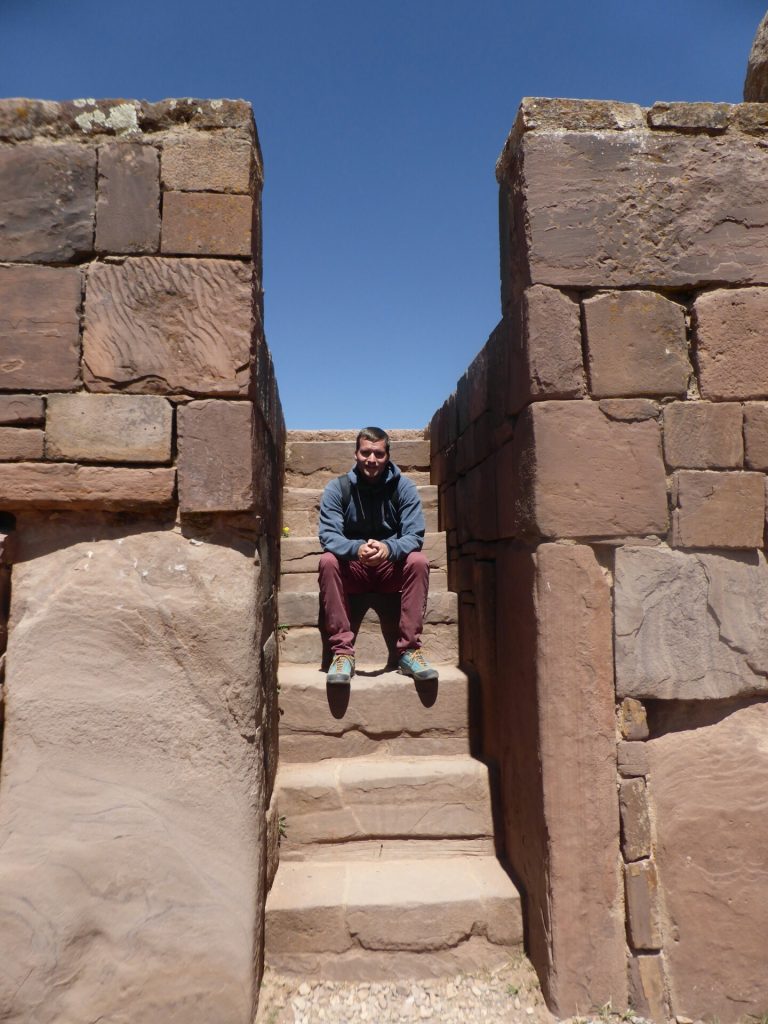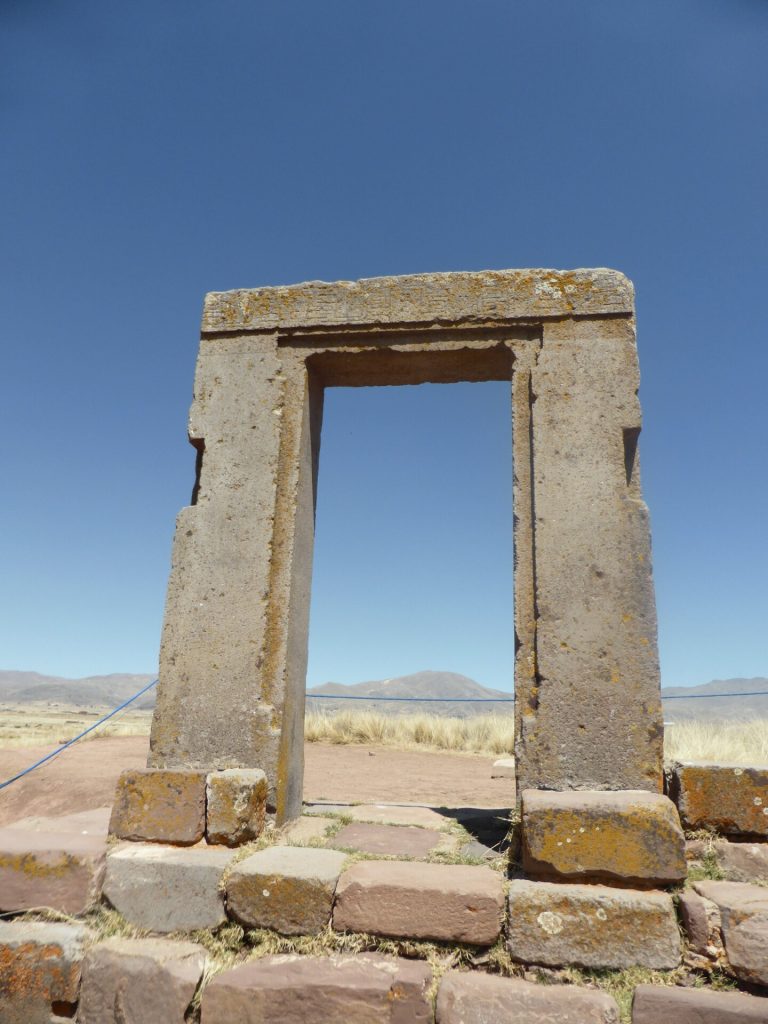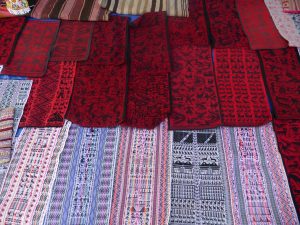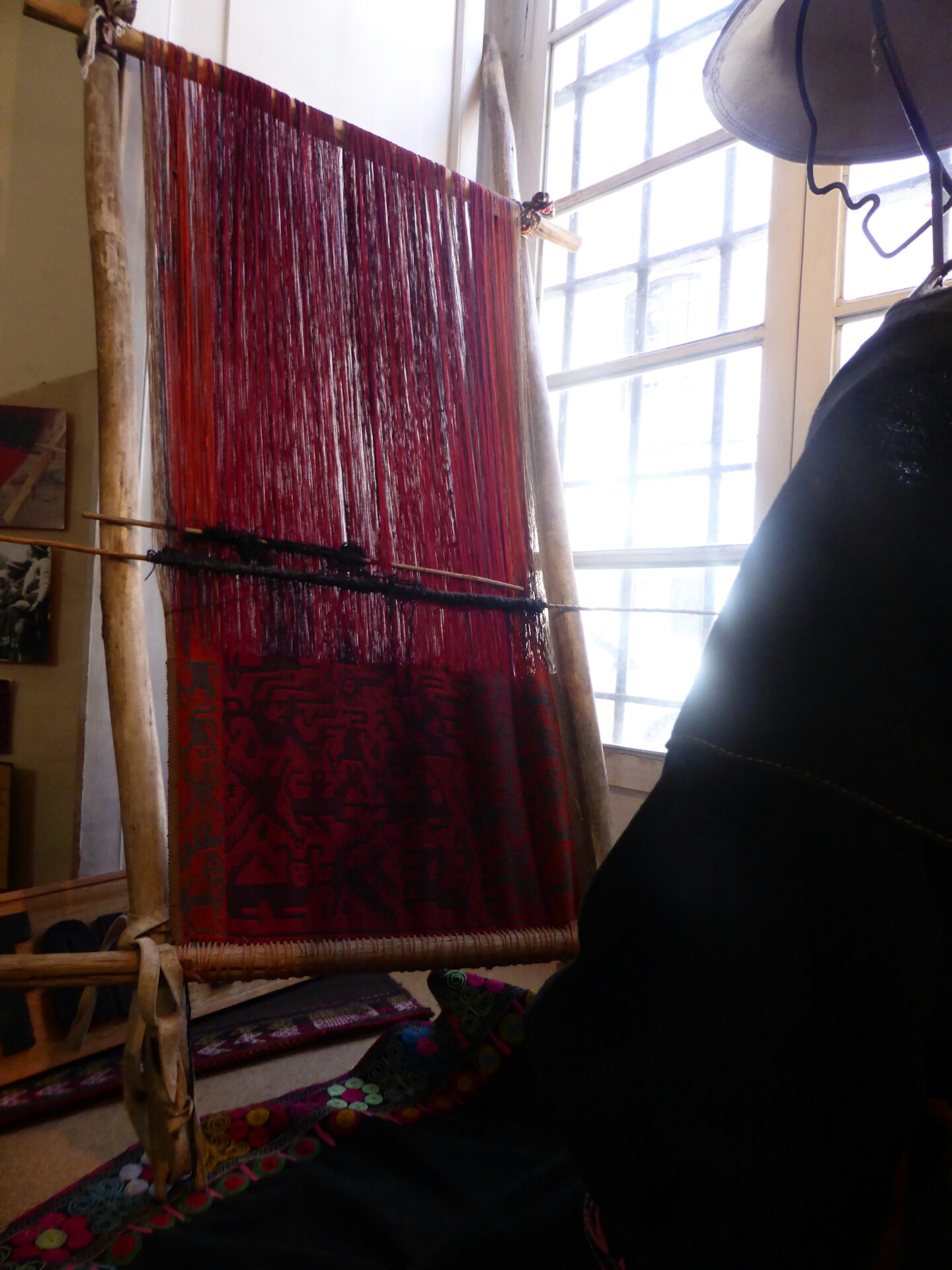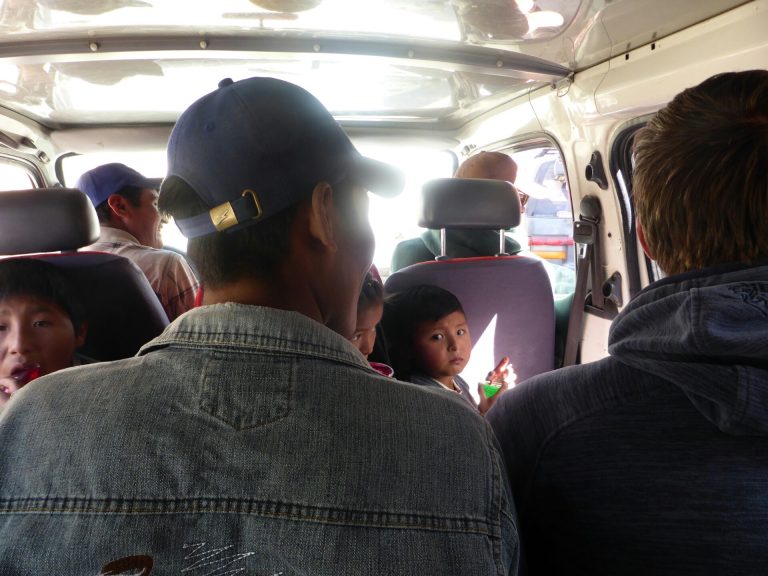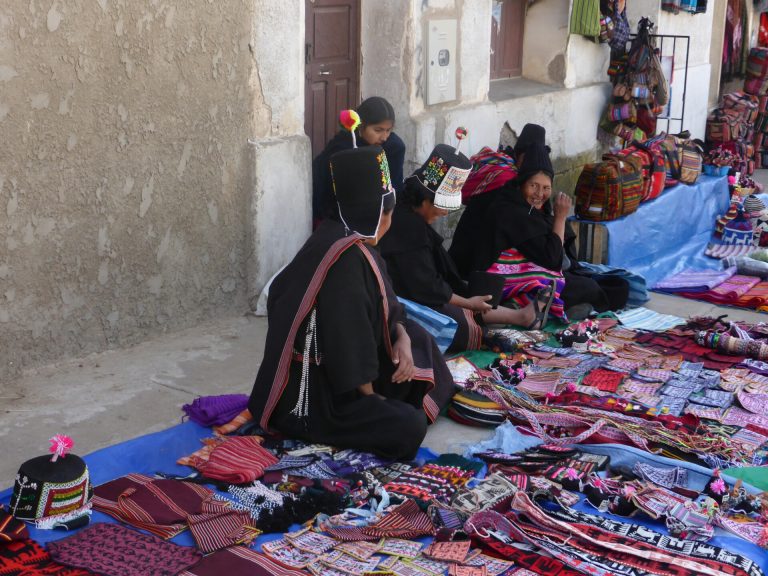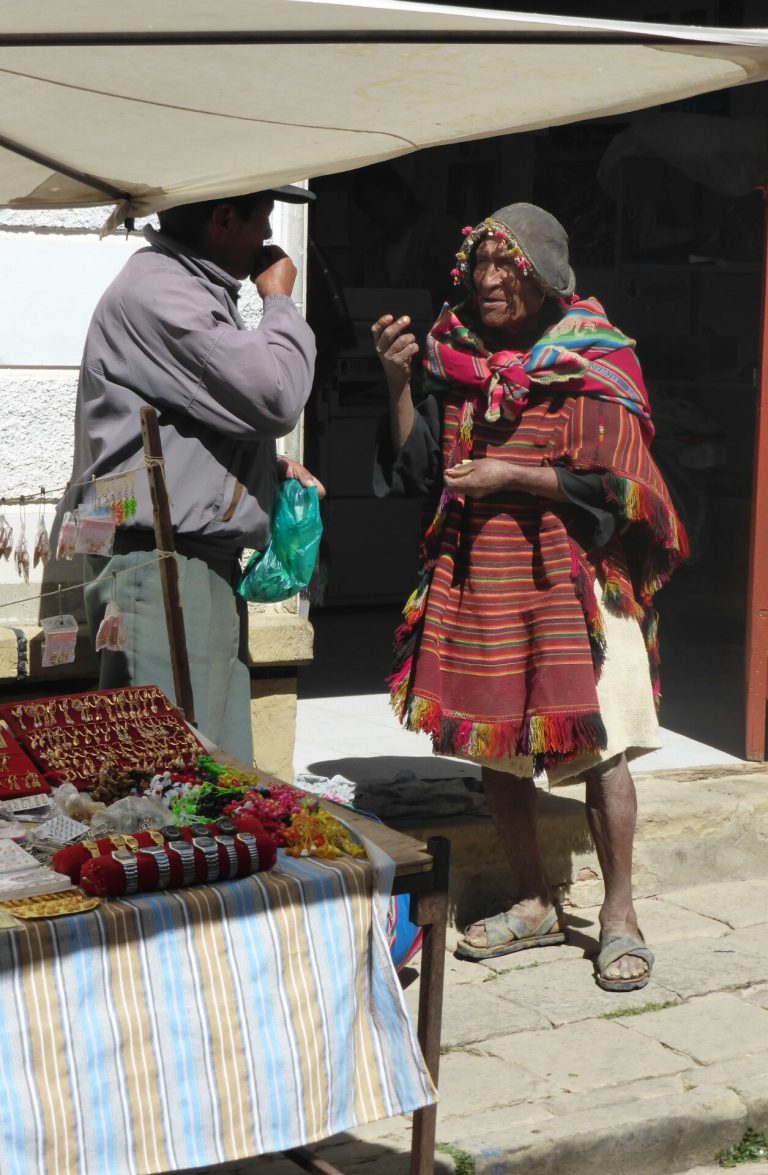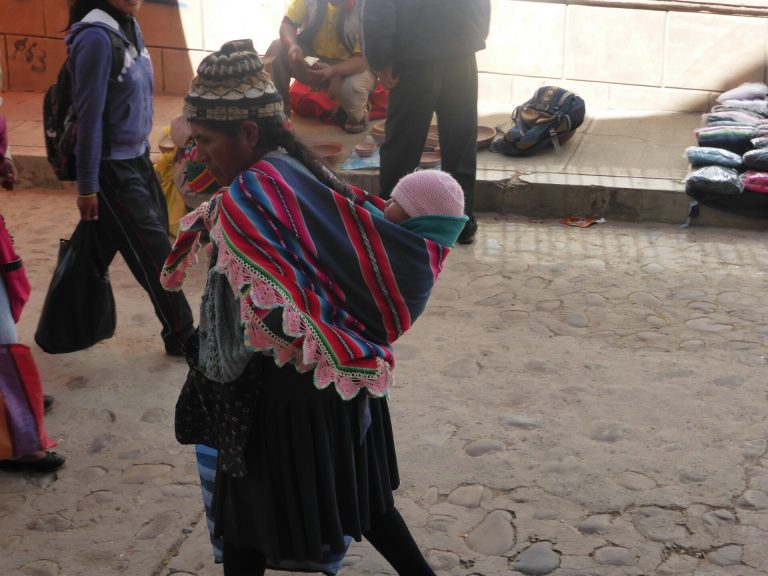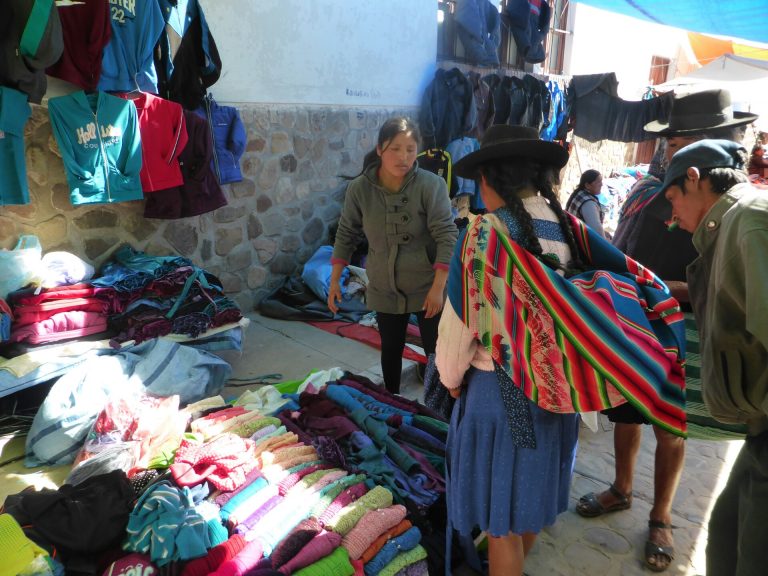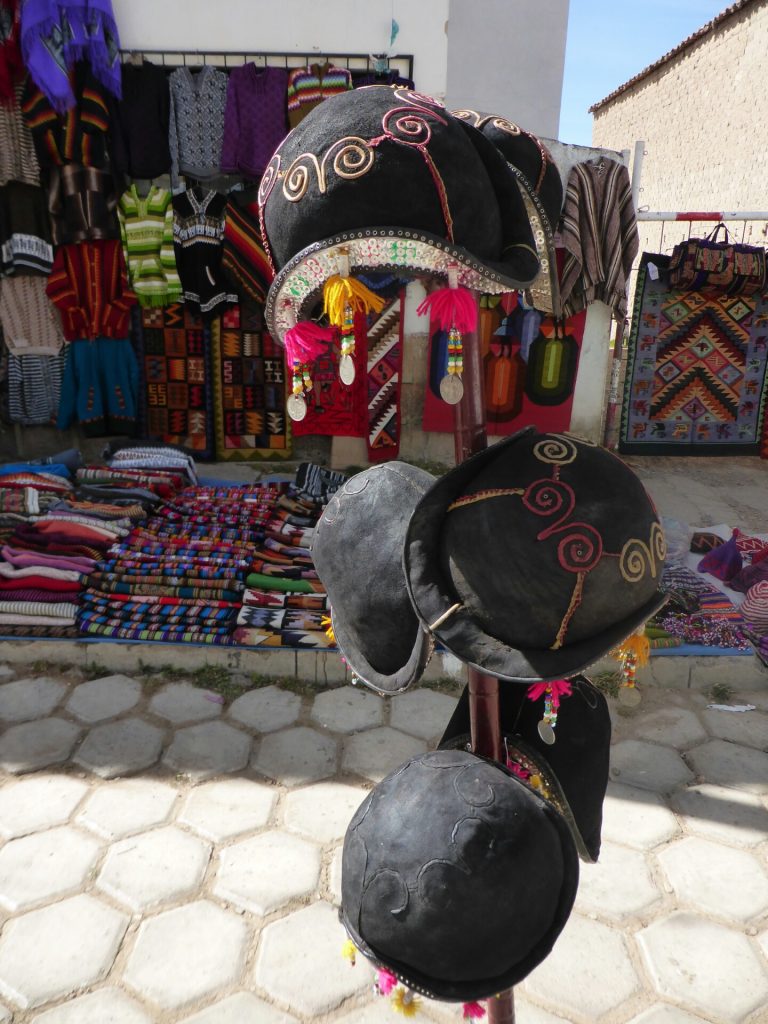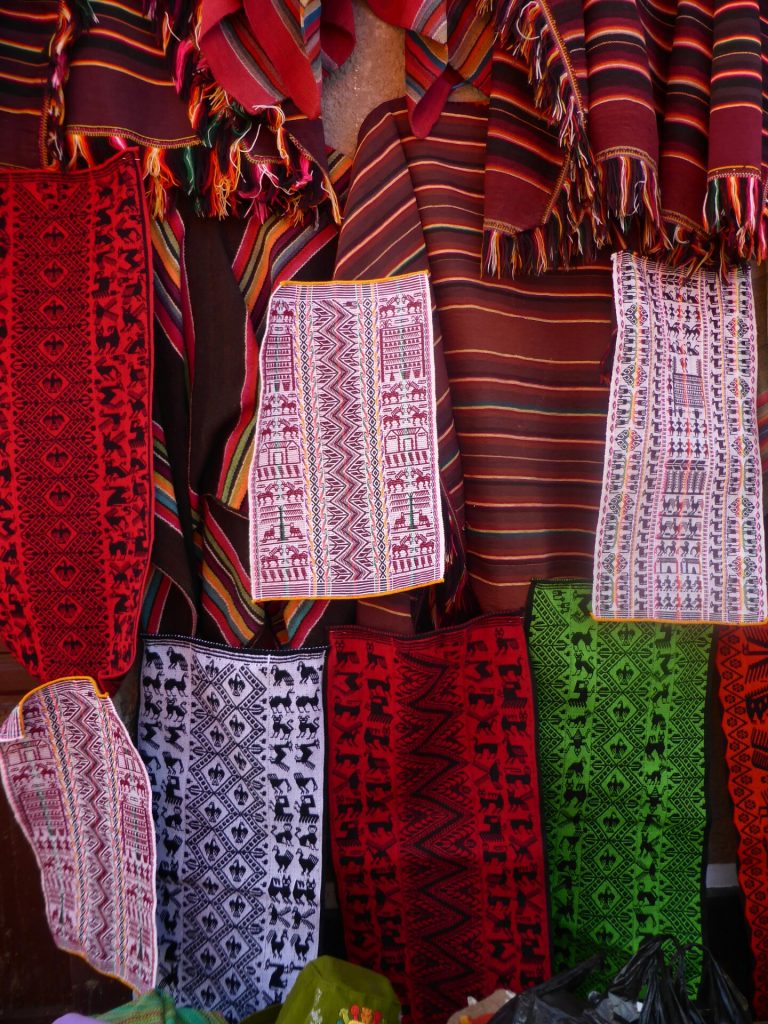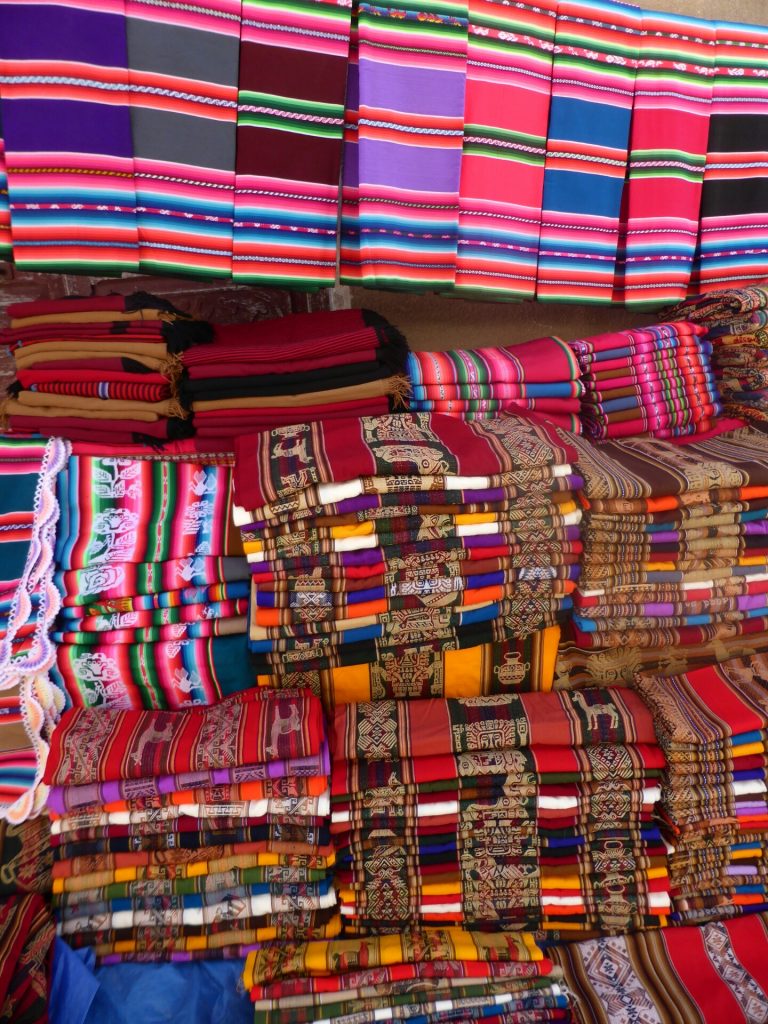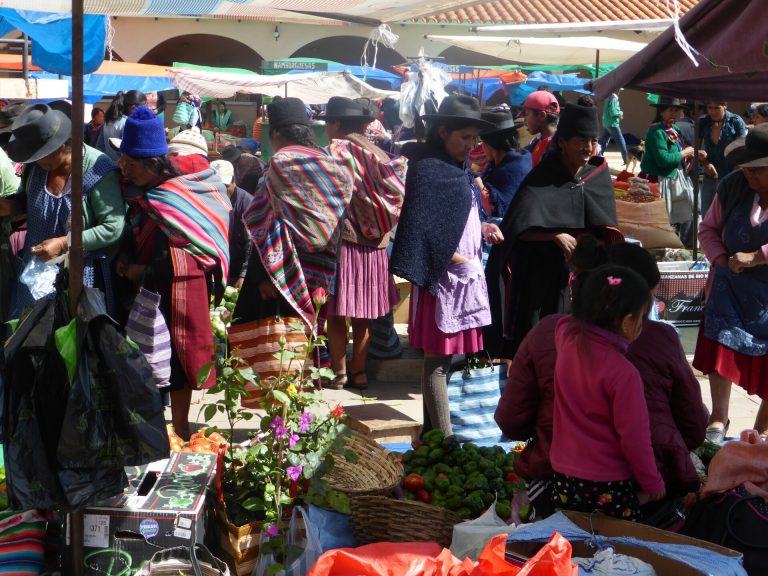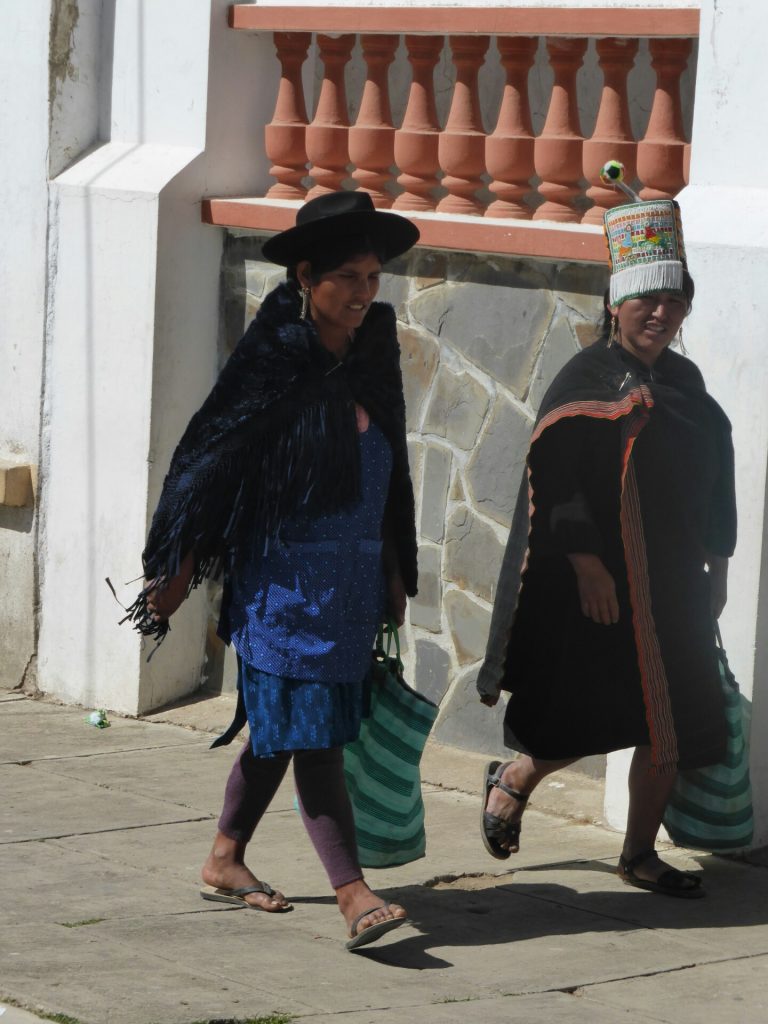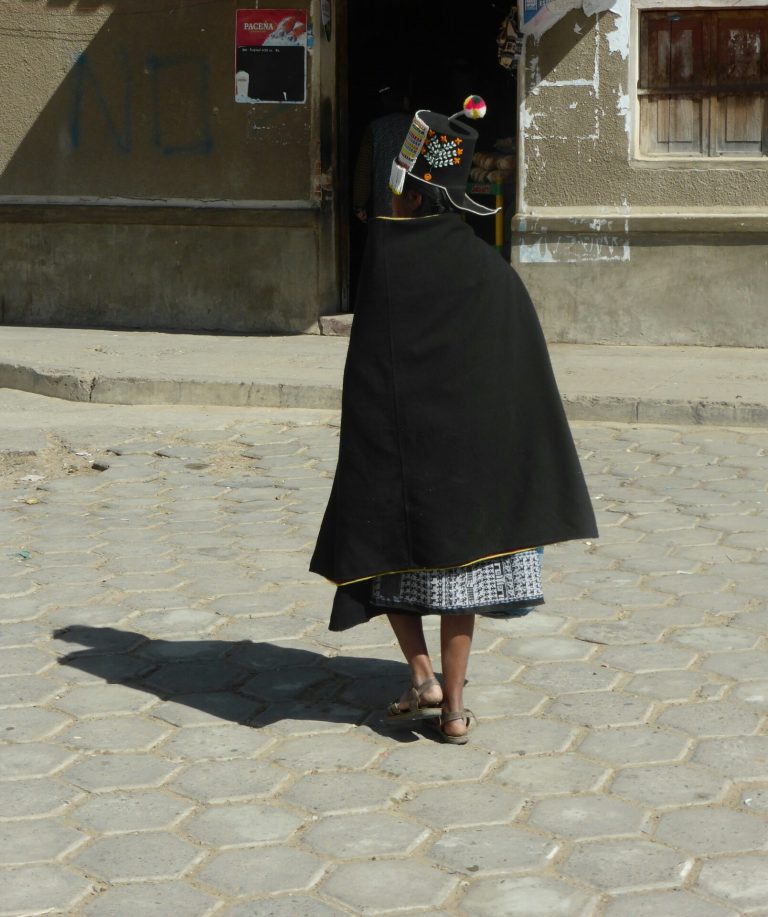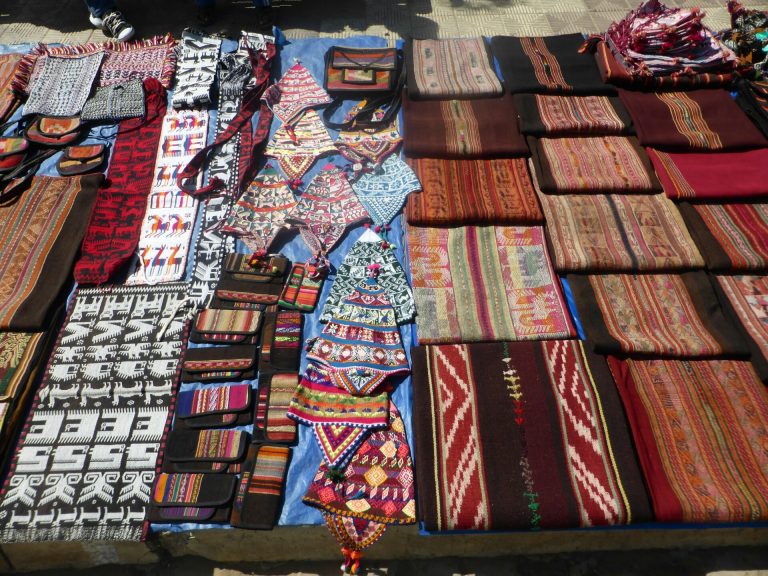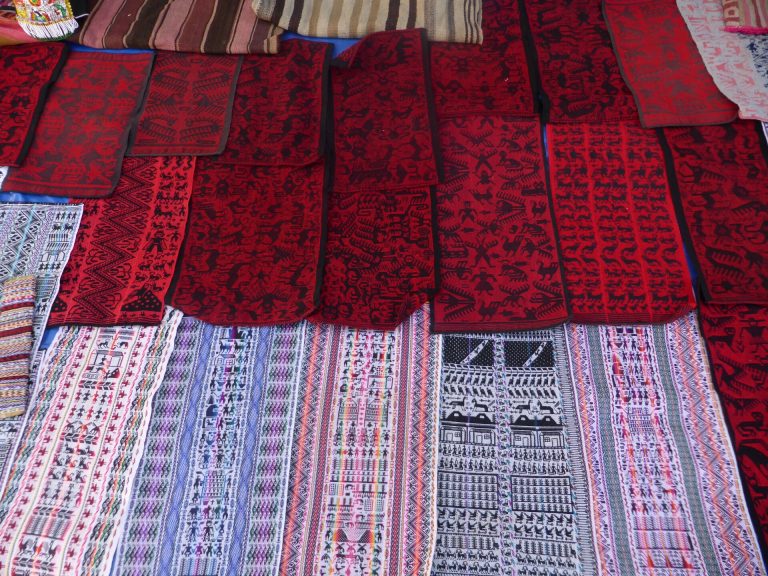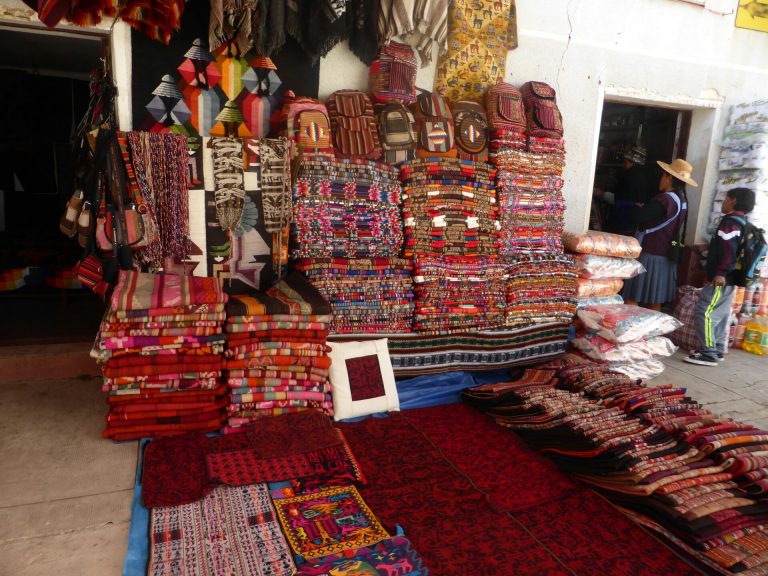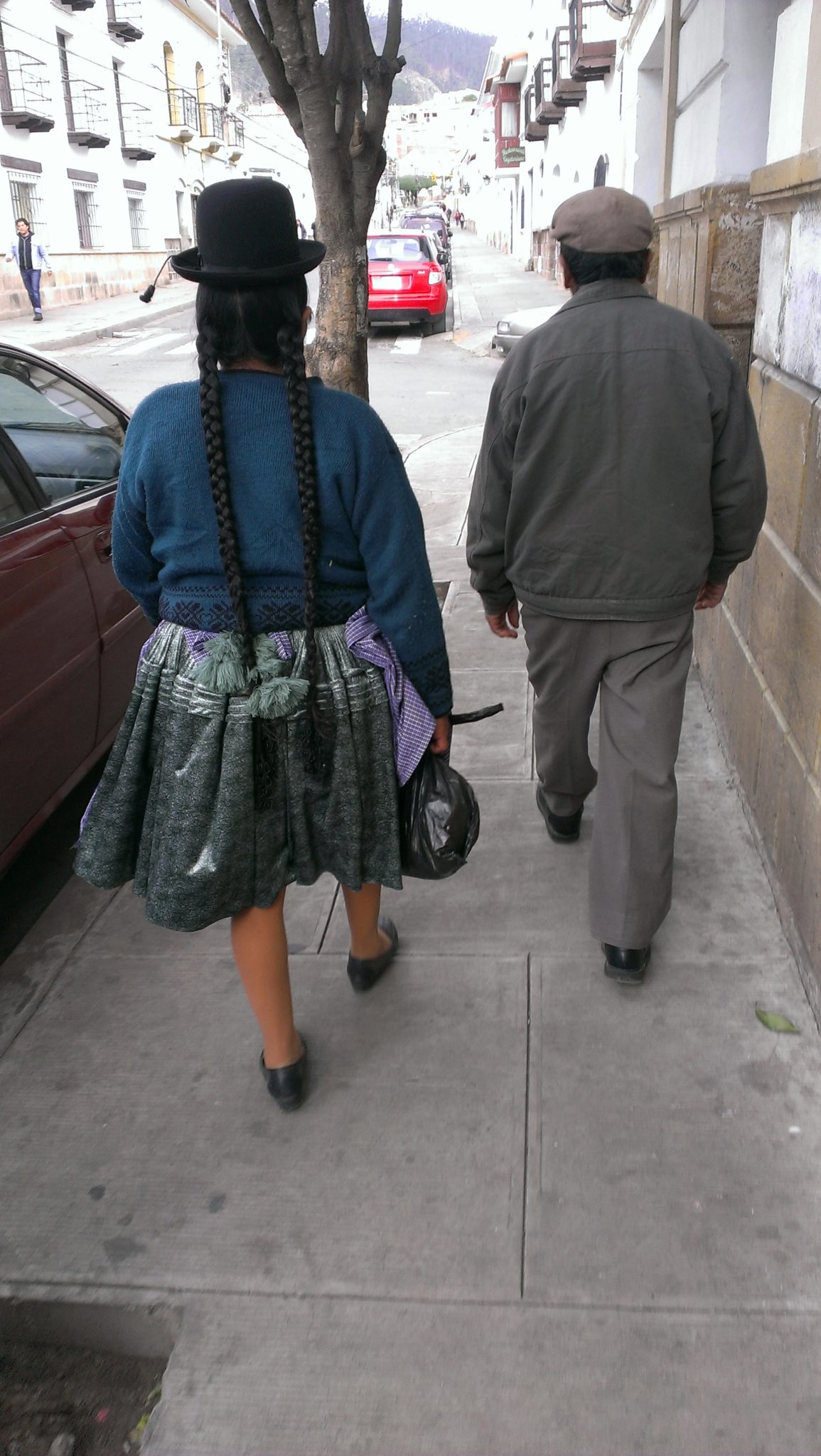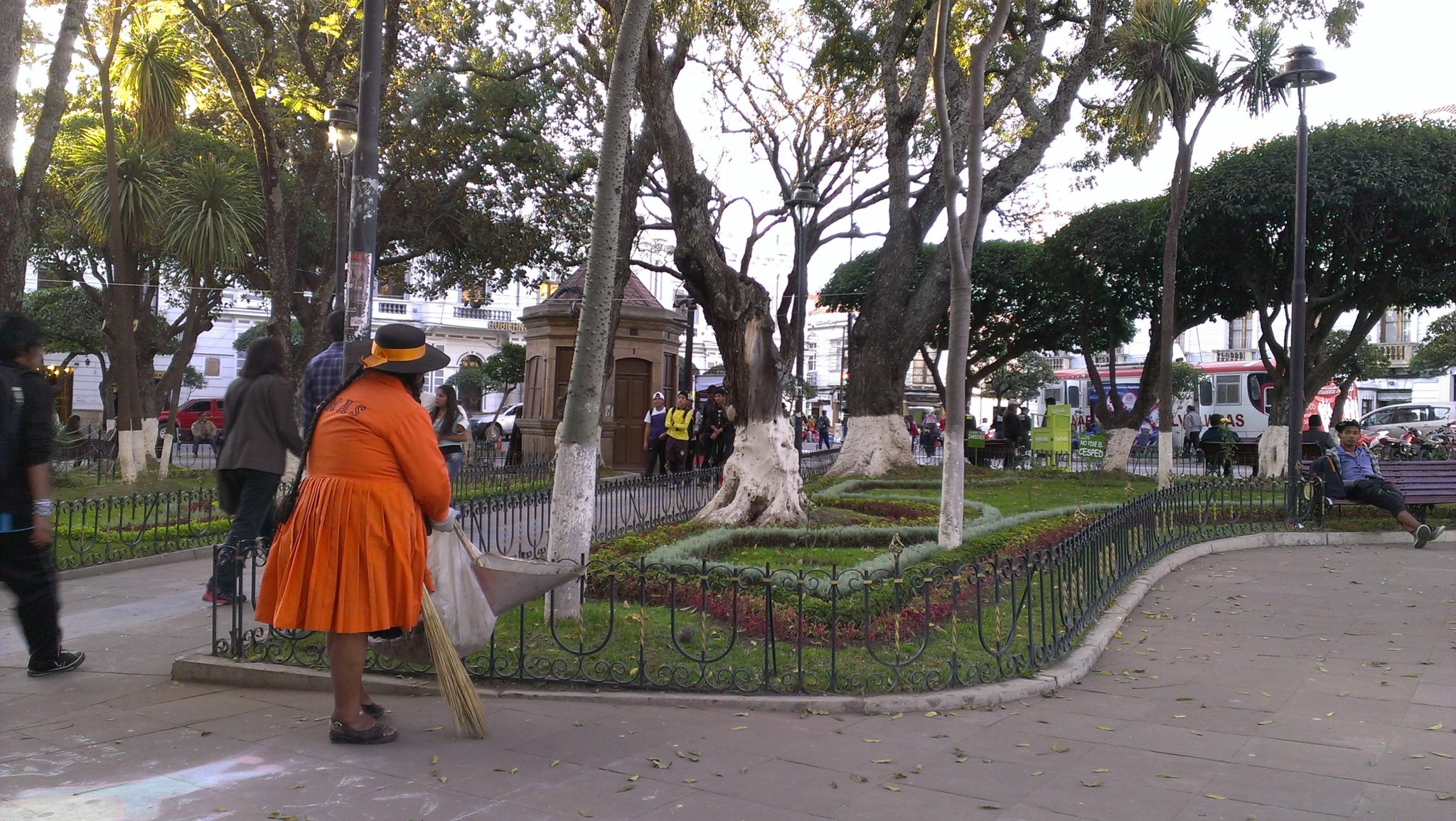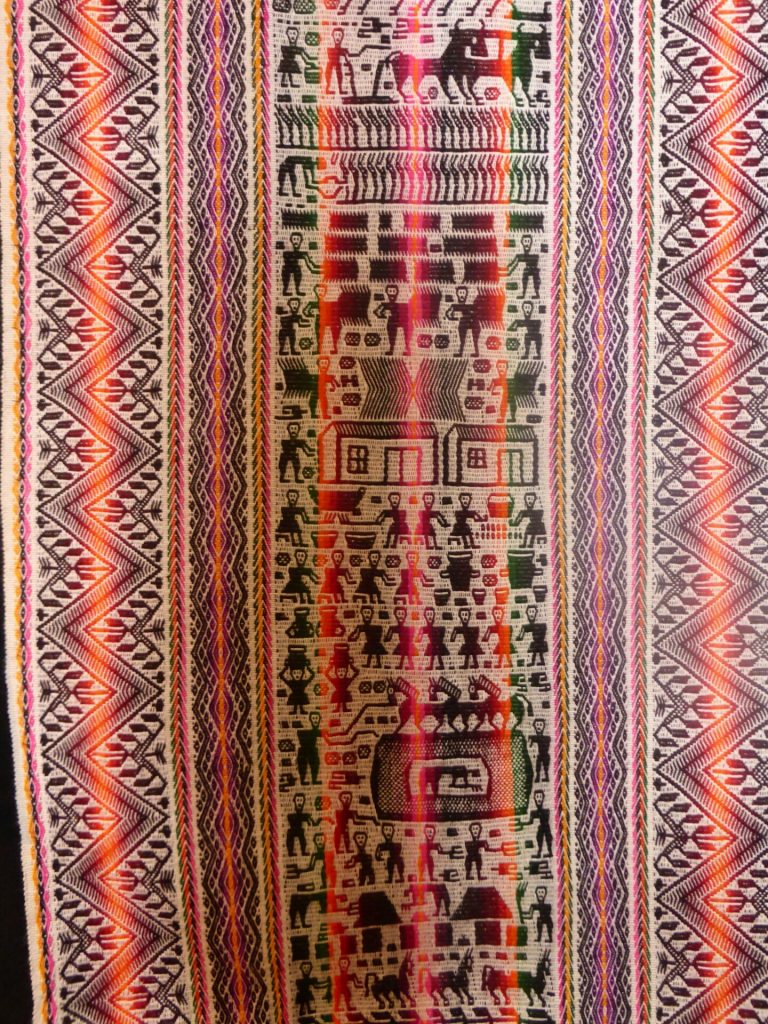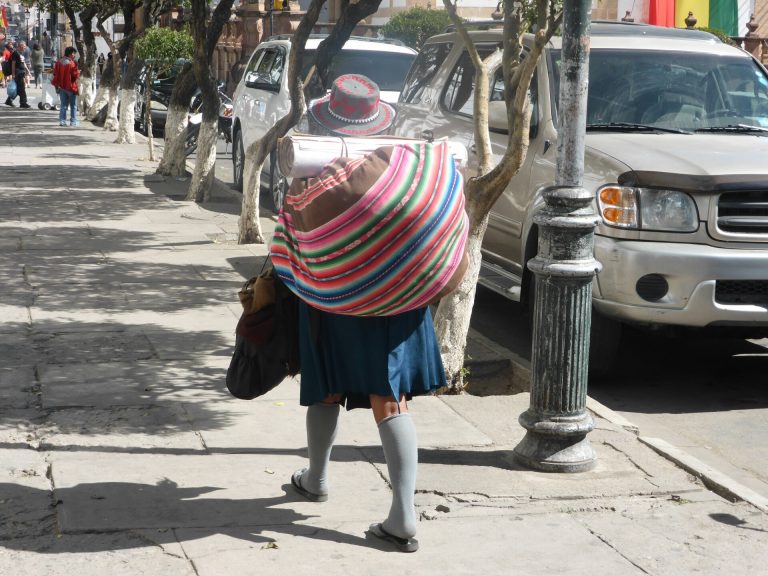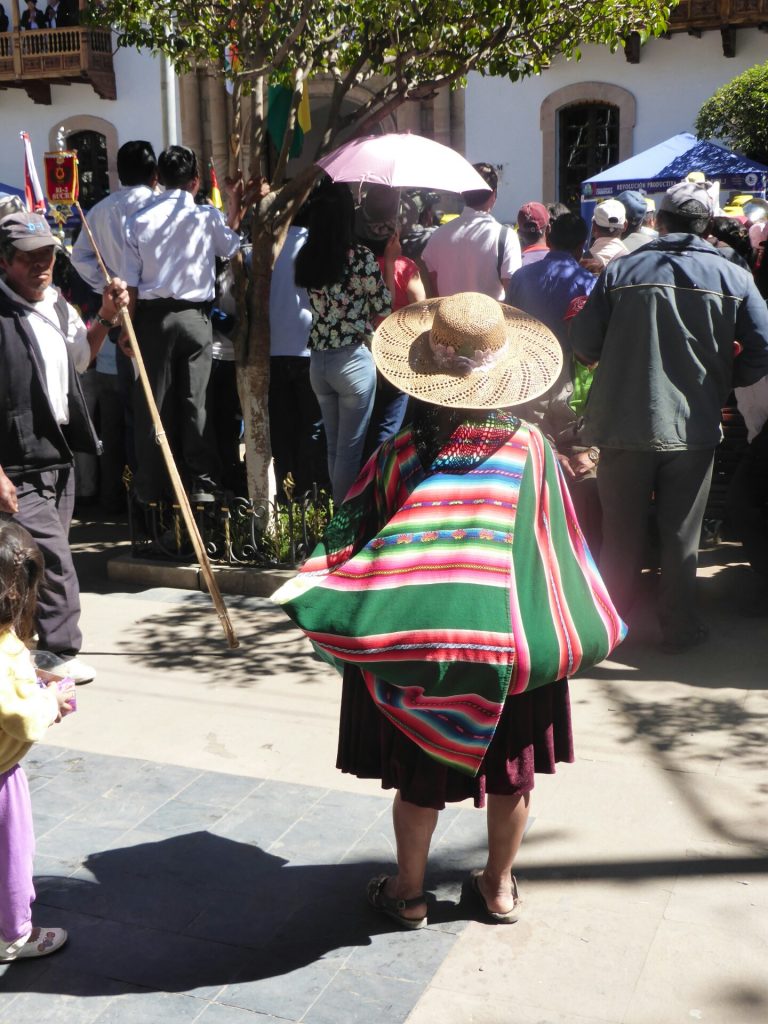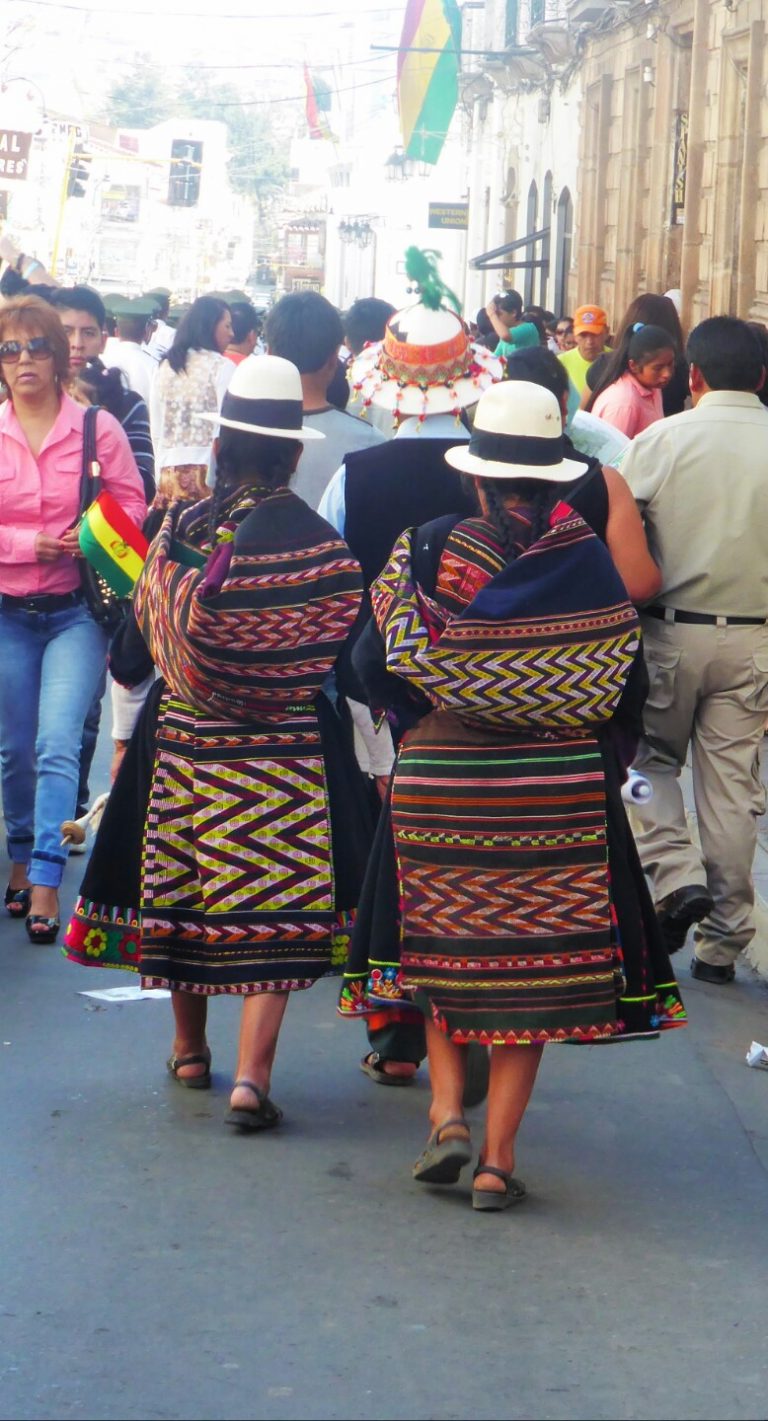On one side of the street we see a dead, dried little lama, next to it some lama fetuses and for a perfect combination there is also some wine and small, fake US dollars. Typical view at Mercado de Hechiceria in La Paz. All of those are offerings for Pachamama, Mother Earth. Nothing can succeed without her, not a single marriage, crops or bulding project. Rumors say that for a bigger construction she needs a human sacrifice and normally a homeless, alcohol or drug addict is chosen. Obviously he is not aware of the honour when being druged or given alcohol until unconscious.
And obviously it doesn't hurt to ask Jesus for his help, just to be on the safe side. It's amazing how Bolivia combines the Catholic religion with their own gods and beliefs...
Going further we see chaotic streets, people selling "open" guinea pigs on the pavement next to electronics and tiles for your bathroom. Strangely enough we enjoy looking at the choas, all the unfinished buildings, that normally would be considered slums, and all those people with less teeth, as some have been dissolved by liters of coca cola and fanta.
And than walking through the centre we are intrigued to see the number one attraction in town the San Pedro jail. It looks just like a school, kids and women going in and out. But it's as special as Bolivia. Prisoners need to pay for their cells, their families live with them (yep including kids) and cocaine is produced day and night. There are also other sorts of businesses, restaurants etc. There was one inmate who decided to organise guided tours for tourists and even for a bit more money you could sleep inside or try the "sugar" produced inside. (Un)fortunately the tours are not available anymore probably because they ended up being in Lonely Planet and there is a book written about this crazy place which is far from flattering (Marching Powder).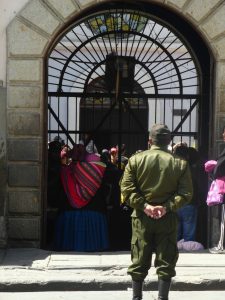
To try to clean our lungs from all the smog of the city we went for a trip to a small village Tiwanaku where pre-Incan ruins of a mysterious civilization are situated. They disappeared after over a thousand years of ruling the region at around 1200 AD. After seeing a BBC documentary about this Lost Kingdom we were expecting huge ruins. But I guess camera adds a few kilos or a few meters to everything. And so Tiwanaku was rather small but still really impressive and beautiful. The most incredible spot was a subterranean temple with scary stone faces on all the surrouding walls. I was shocked how all of the monoliths of a few tons were dragged to the site through Lake Titicaca on reed boots. Between all the ohs and ahs we needed to watch our steps as lamas poo on everything, monument or not....
